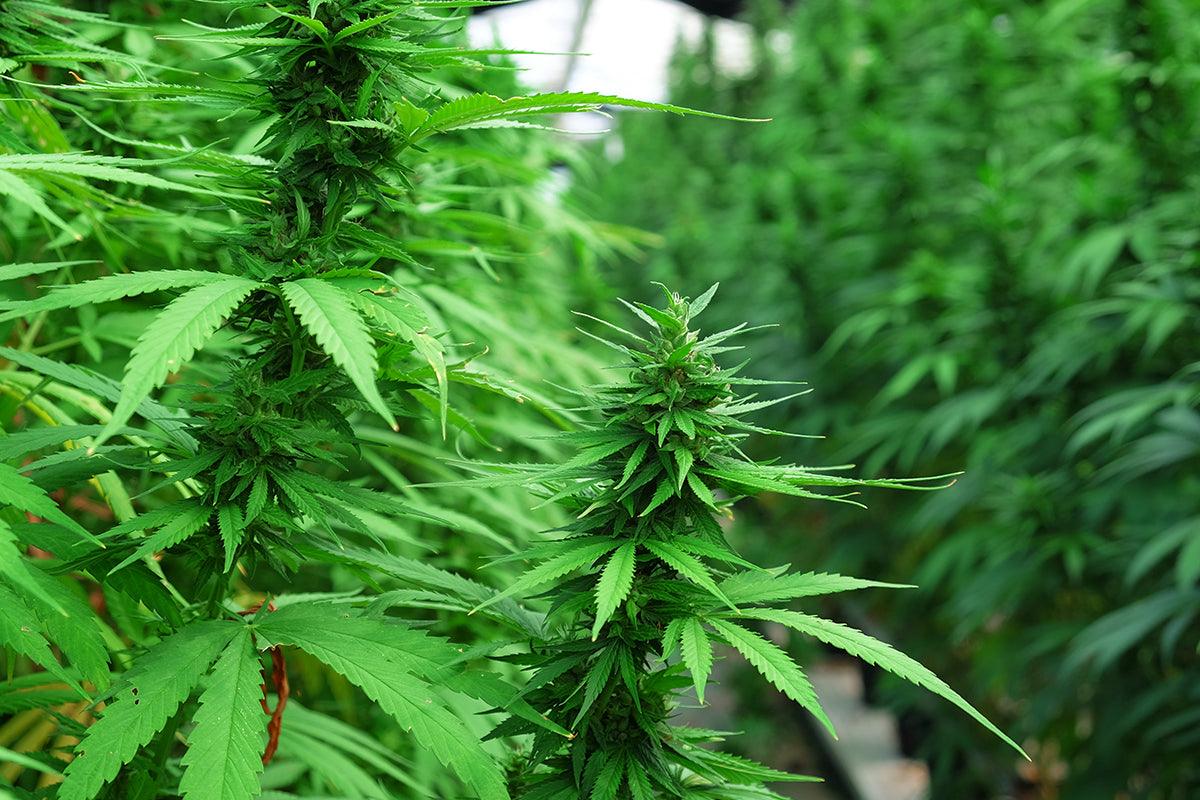How to prevent mites and aphids from destroying your crop
Cannabis growers need to have eyes everywhere. Fungi and mold are always around the corner, nutrient deficiency and intoxication are lurking, as are sudden rains, frosts and scorching summers that would even cause cacti to die. But that's not all: since everyone likes cannabis, invasions and attacks by annoying parasites certainly couldn't be missed . And I'm not talking about just one variety of curious little beasts, I'm talking about an army of very dangerous beings thirsty for chlorophyll and THC .
Like the good family man, the cannabis grower's primary duty is to ensure he is always on the right side of the ring. It goes without saying, but even in this case, the best weapon to try to win this war is prevention . Unfortunately, even by adopting the best preventive measures, you are never in an iron barrel.
Some pests are resistant to everything, and growers can find themselves having to deal with an invasion even when they have used all existing precautions to avoid it. There are more than a few potential small threats that we can never let our guard down against.
Insects: how to avoid them?
Mites, caterpillars, cicadas, leaf miner insects, snails and snails, beetles, fungus gnats, whiteflies, thrips, agrotids, crickets, scale insects, aphids, ants ... These are just some of the soldiers of the enemy army. And as post-war American propaganda taught, knowing the enemy is the first weapon one has at one's disposal to defeat him . So we will look under the microscope, one by one, at some of the most widespread and dangerous cannabis parasites.
In general, prevention is the real secret to allowing our plants to live a peaceful, healthy life and guarantee good growth. It is important to adopt adequate health precautions , always using clean clothes and sterilized tools to minimize the risk of bringing diseases into the growing space from outside. You should always wash your hands before touching foliage and after treating diseased plants to reduce the risk of contamination.
In general, dirt and clutter are fungi and parasites' best friends, so keeping your grow space tidy is the best step to avoiding dangerous external attacks. Another very important aspect is good ventilation , which repels fungi and insect colonies and allows plants to grow in excellent health.
Certainly always using new pots (when growing indoors ) and fresh soil increases the management costs of the cultivation, but it becomes a negligible expense compared to the potential risk of diseases/fungi/mold. In general, plants of the indica variety are more resistant to insects than those of the sativa variety , which - on the contrary - appear to be more resistant to attacks by fungi and mold.
Obviously, prevention does not end with the use of sterile pots, fresh soil and disinfected tools, but must be continued for the entire duration of cultivation . Unfortunately, doing your best does not eliminate the risk of insects and parasites, which can still appear without asking permission. In the case of unwanted guests, it is not necessary to resort to aggressive chemicals and treatments: when faced with an infestation or disease caused by insects, Neem oil , pyrethrum or hydrogen peroxide can be used to disinfect the plant and fight parasites.
Neem oil and the other natural products mentioned can also be used as preventive measures during the growth of the plant, with different frequencies and concentrations. In general, however, this type of preventive treatments must never be started before the fourth week of growth, to allow the plant to grow and strengthen without any type of external agent.
Learn about cannabis pests
Below is a list of the most common insects that can endanger your cannabis plantation. Every type of precaution can help, but none guarantees a 100% chance of not falling victim to these very annoying little creatures.
Spider mites
They are insects with 8 legs and are therefore classified as spiders, but they behave just like real mites. They usually live on the underside of the leaf and suck the plant's vital fluids . Their signature are small yellow/white spots that appear on the top of the leaf. If the plant has been attacked by mites and no timely action has been taken, the infection progresses rapidly leading, in serious cases, to the death of the plant or to the arrest of its development.
In addition to having 8 legs, these mites have another thing in common with actual spiders: they spin webs . In fact, to be sure of an attack, simply moisten the areas believed to be infected with water to reveal the presence of small cobwebs.
The mites most commonly found on Cannabis plants are of your types, those with brown spots or the so-called red and yellow/white spiders . The leaves that are infested first are generally those near the lower part of the plant, so it is very important to always keep this area under control. Mites thrive in temperatures above 21 degrees but their ideal temperature is above 27 degrees. Cooling the room - without exaggerating, to avoid serious consequences on the plant - can be a good way to destroy them.
To keep them under control once they appear, it may be helpful to cool the room and increase the humidity. In the event that mites appear on the mature flower, the only method I know that really works, without the use of chemical agents, is to clean the entire bunch with a vacuum cleaner every two days, until the flower is ready to be collected. To eradicate adult mites and developing eggs, anti-mite or acaricides can be used, such as pyrethrum or margosa oil sprayed or dipped into the plant, with an interval of three days between the first and second sprays.
Aphids
Aphids are well known as “plant lice” . Typically grey/black in color and the size of a pinhead, they can appear in other colors ranging from pink to green. They attack the plant by sucking the sap and reproduce at a crazy speed , so it is very easy for you to find yourself infested by these annoying little animals in an instant.
What does he like? Aphids tend to prefer indoors only if they have a lot of company outside; therefore be careful when moving pots from outside to inside - for example when autumn approaches - because you could become the vector of the parasites yourself. Aphids bring with them a whole host of other harmful insects such as fungi, bacteria and sometimes viruses . In nature, ladybugs and lacewings feed on aphids but pyrethrum - vaporized 2 to 3 times a day - still proves to be the best way to defeat them.
Dialeurodes or whiteflies
They look like small butterflies (1 mm) and in the adult stage they also have wings, but they are neither flies nor butterflies. They are associated with the aphid family and leaf fleas. They generally attack the weakest part of the plant by carrying viruses. They lay their eggs prolifically under the leaf and generally invade the entire plant.
Unfortunately, the presence of this type of insect is noticed when it has already reproduced : at this point the plant will lose vigor, the leaves will turn yellow and fall. Sometimes whiteflies can even lead to plant death .
The worst aspect of whiteflies is that the lifespan of adult specimens is 4-6 weeks, which allows the eggs to hatch at the same time, with the real risk of harboring dialeurodes in all stages . It therefore becomes essential to vaporize them every three days in order to affect both the eggs and the adults of the species. Pyrethrum is an excellent chemical with which to keep them under control, while wasps are natural predators of dialeurodes.







